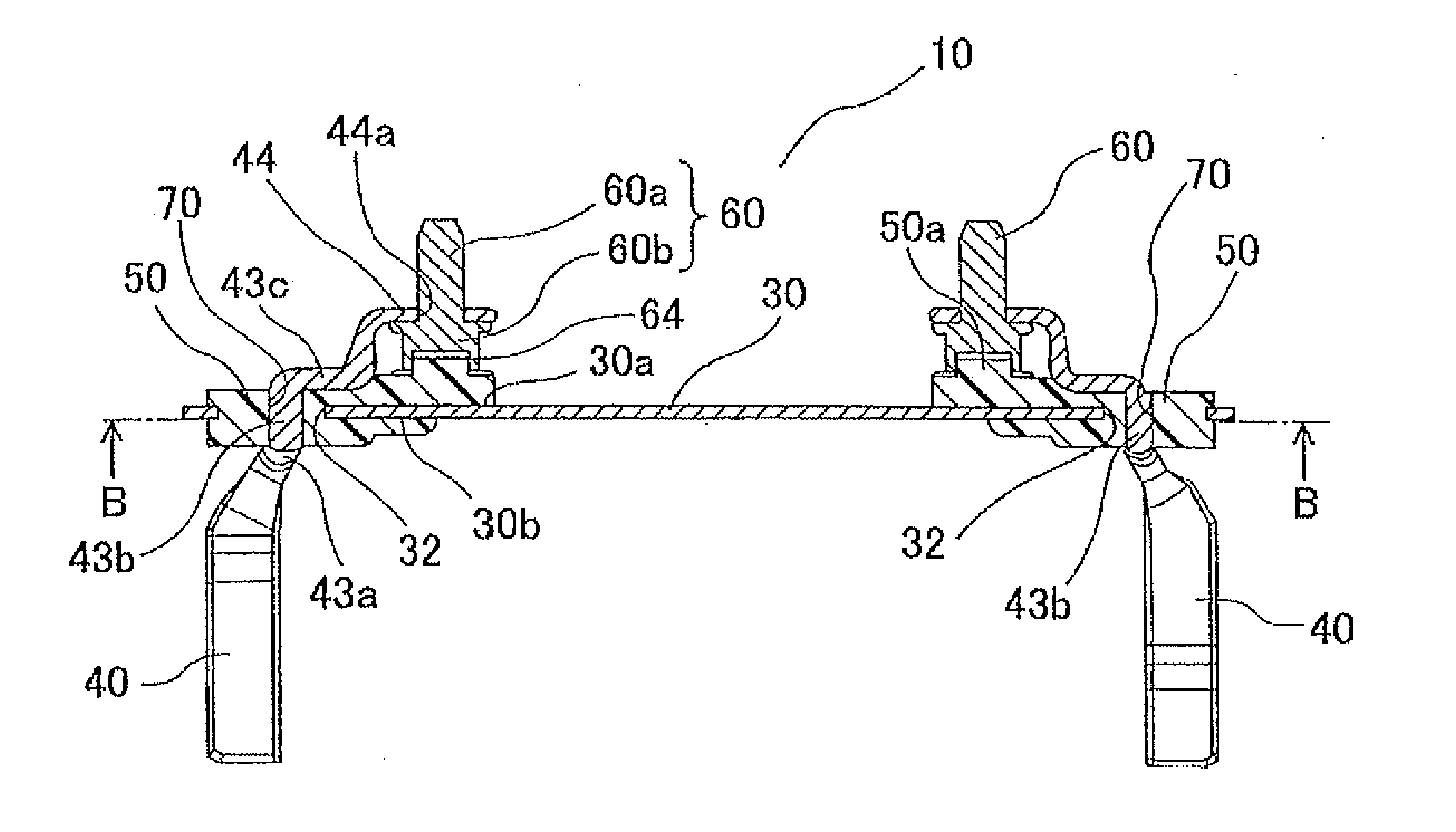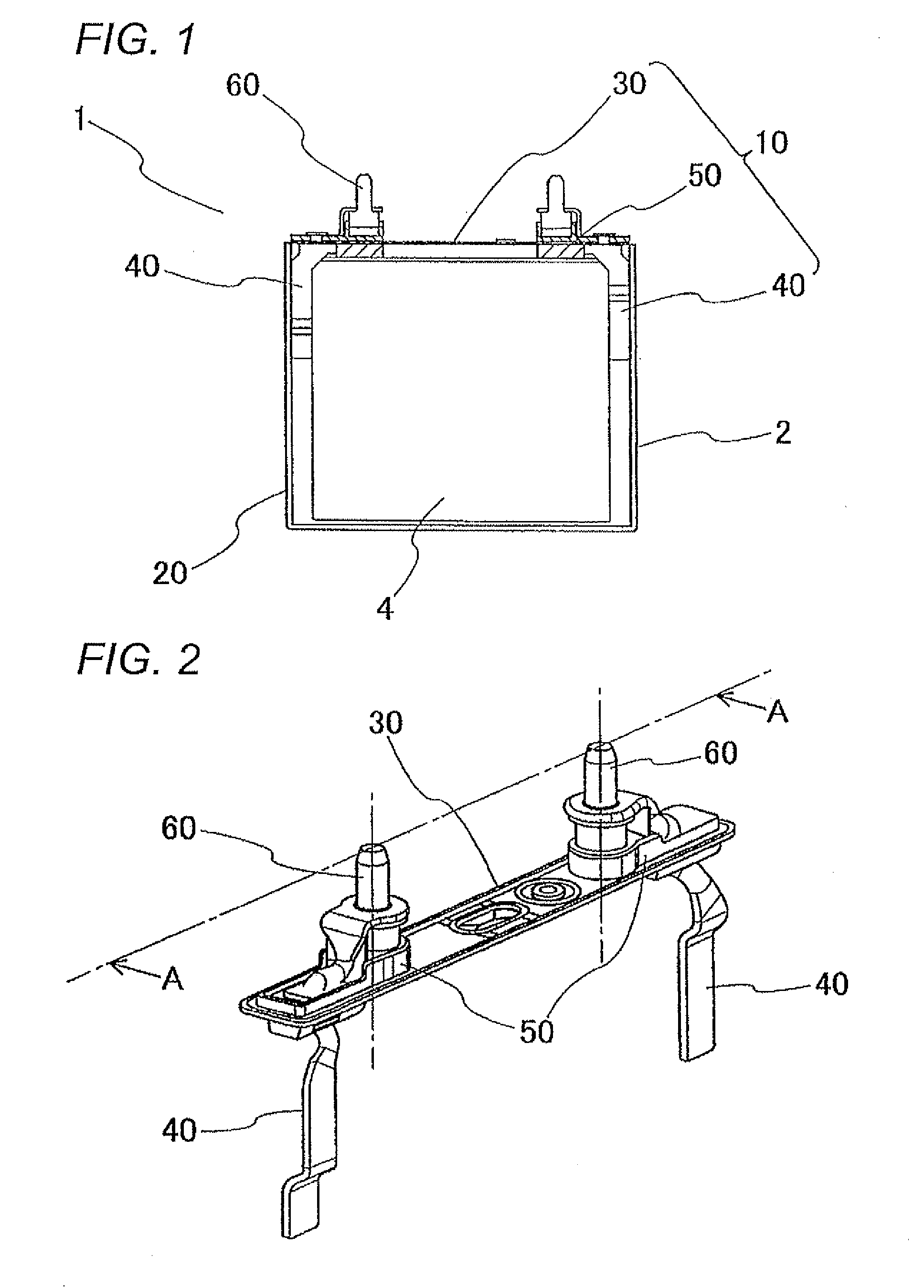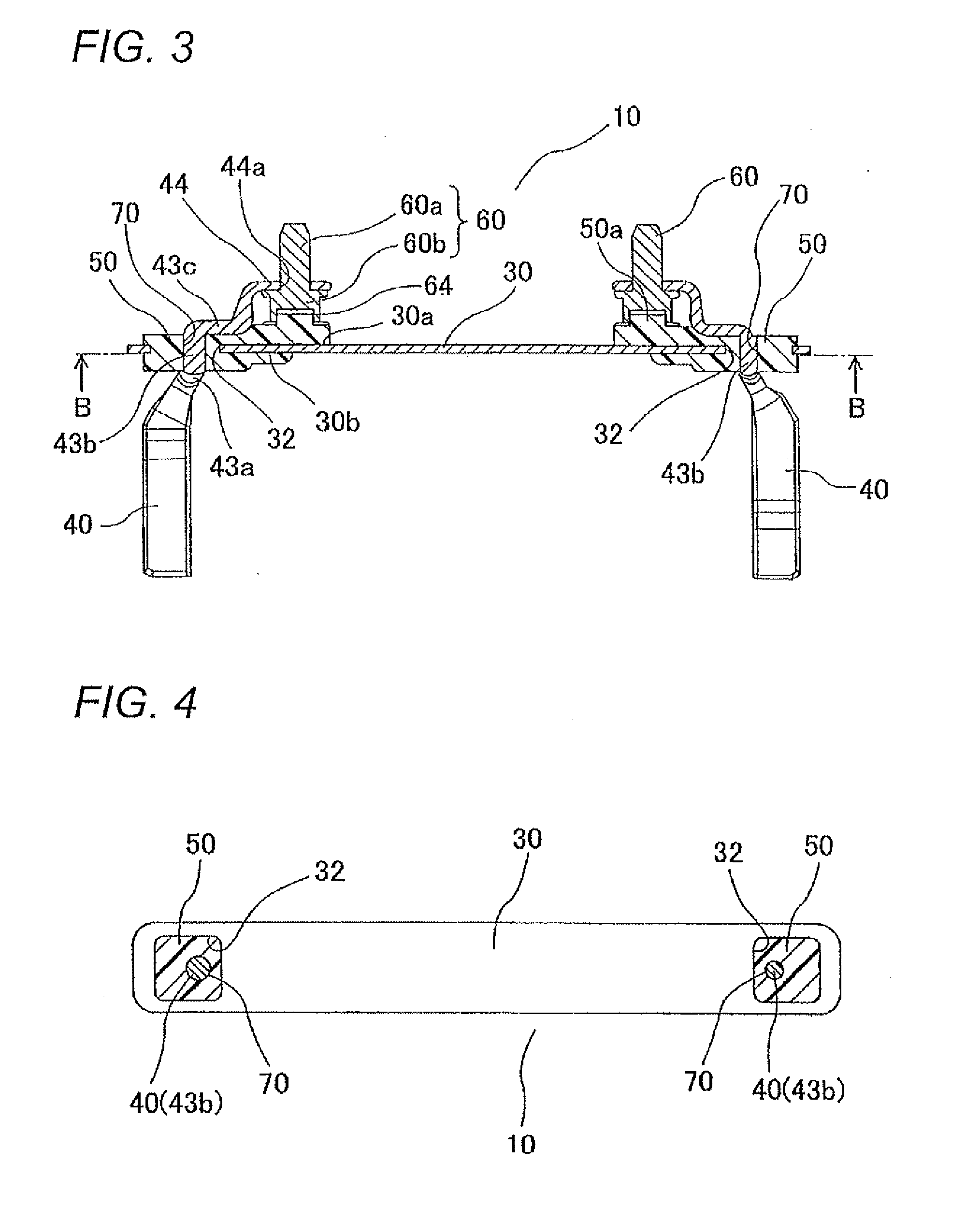Battery cover member
a battery cover and member technology, applied in the field of battery cover members, can solve the problems of battery capacity and battery life degradation, cracks in the resin insulating sealing member, and deterioration of battery performance, so as to achieve the effect of improving material yield
- Summary
- Abstract
- Description
- Claims
- Application Information
AI Technical Summary
Benefits of technology
Problems solved by technology
Method used
Image
Examples
Embodiment Construction
[0025]An embodiment of the present invention is hereunder described in detail by reference to the drawings. FIG. 1 is a general schematic view showing a configuration of a lithium ion secondary battery 1 having a battery cover member 10 of a present embodiment. FIG. 2 is an oblique perspective view showing the battery cover member 10 of the present embodiment, and a cross section taken along line A-A is illustrated in FIG. 3. Further, a cross section taken along line B-B shown in FIG. 3 is illustrated in FIG. 4.
[0026]As shown in FIG. 1, the lithium ion secondary battery 1 has a substantially rectangular parallelepiped metal container 2; an electrode member 4 housed in the container 2 while rolled flatly; a pair of electrode terminals 40 connected to both axial ends (right and left ends shown in FIG. 1) of the electrode member 4; and a connect member 60 electrically connected to the electrode terminals 40 outside of the container 2. An un-illustrated electrolyte is kept in the contai...
PUM
| Property | Measurement | Unit |
|---|---|---|
| sealing area | aaaaa | aaaaa |
| shape | aaaaa | aaaaa |
| power | aaaaa | aaaaa |
Abstract
Description
Claims
Application Information
 Login to View More
Login to View More - R&D
- Intellectual Property
- Life Sciences
- Materials
- Tech Scout
- Unparalleled Data Quality
- Higher Quality Content
- 60% Fewer Hallucinations
Browse by: Latest US Patents, China's latest patents, Technical Efficacy Thesaurus, Application Domain, Technology Topic, Popular Technical Reports.
© 2025 PatSnap. All rights reserved.Legal|Privacy policy|Modern Slavery Act Transparency Statement|Sitemap|About US| Contact US: help@patsnap.com



